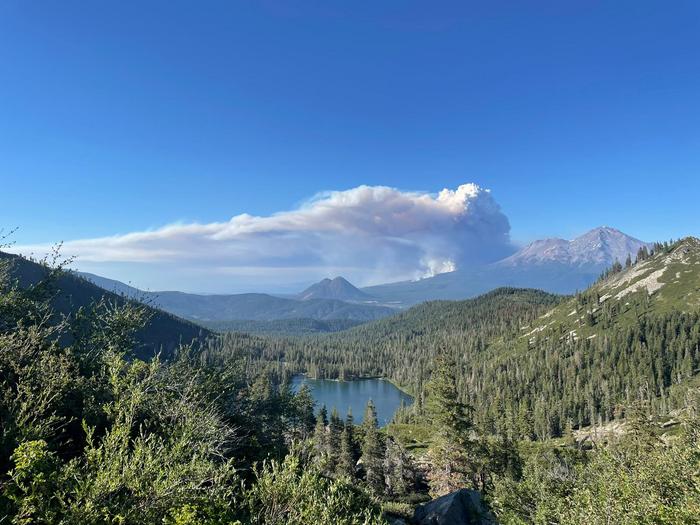As much as 70% of California was covered by wildfire smoke during parts of 2020 and 2021, according to a study from the University of California, Davis. The study, published today in the journal Communications: Earth & Environment, combined lake-based sensors with satellite imagery to find that maximum smoke cover has increased by about 116,000 square miles since 2006.

Credit: Erin Suenaga/University of Nevada-Reno
As much as 70% of California was covered by wildfire smoke during parts of 2020 and 2021, according to a study from the University of California, Davis. The study, published today in the journal Communications: Earth & Environment, combined lake-based sensors with satellite imagery to find that maximum smoke cover has increased by about 116,000 square miles since 2006.
The study measured lake responses to wildfire smoke in 2018, 2020 and 2021 — the three largest fire seasons on record in California. It found the lakes were exposed on average to 33 days of high-density smoke between July and October, with August and September having the highest number of smoky days.
The extent of wildfire in California has quintupled since the 1970s, the study notes. Yet little is known about the impact of smoke on lake ecosystems.
“We’re looking at a scenario where for the next 100 years or longer, smoke will be a feature on the landscape,” said senior author Steven Sadro, a UC Davis limnologist and associate professor in the department of Environmental Science and Policy. “What does that mean for fundamental ecology? What are the implications of those changes? Those are the big questions we’re focused on in aquatic systems.”
Science and serendipity
Answering those questions requires a bit of serendipity. Scientific instrumentation needs to be present in lakes when and where wildfire smoke occurs to measure effects.
As smoke settled over the state throughout the three main study years, scientific sensors in 10 lakes were taking note of the changes.
The lakes spanned a gradient of California landscapes, from cold mountain lakes to murky warmer waters. They stretched from Castle Lake in the Klamath Mountains, to Lake Tahoe and Emerald Lake in the southern Sierra Nevada, Clear Lake in the Coast Range, and a site in the Sacramento-San Joaquin River Delta.
“We were measuring things like temperature, light and oxygen in the water,” said lead author Adrianne Smits, a research scientist in the UC Davis Environmental Science and Policy Department. “These are all components of lake productivity and health. We were interested in how those things change under smoky conditions.”
The scientists hypothesized that smoke and ash would “dim the lights,” affecting rates of photosynthesis and respiration of the lake’s plant and aquatic life – the foundation of healthy lake ecosystems.
Changed by smoke
The study verified that wildfire smoke does change light, water temperature and oxygen in lakes — the basic drivers of lake function and health — but those changes are as variable as the unique lakes studied.
Smits said there is no one answer to how wildfire smoke impacts lakes other than, “It depends.” Lake size, depth, smoke cover, nutrient levels and more dictate how a lake responds to the changes. But lakes are changing.
“We’re seeing changes — often decreases — in photosynthesis and respiration rates that drive almost everything else,” said Smits. “Food webs, algal growth, the ability to emit or sequester carbon — those are dependent on these rates. They’re all related, and they’re all being changed by smoke.”
This points to the need for more research to understand how the scale, scope and intensity of recent and future wildfires affect lake ecosystems.
“We need to reframe how we’re thinking about wildfire smoke — as a seasonal weather phenomenon and not just an ‘event’ that happens and goes away,” said Smits. “We think about it for our health, but we should be thinking about it for ecosystem health, as well.”
Co-authoring institutions include the UC Davis Tahoe Environmental Research Center; UC Davis Land, Air and Water Resources; University of Nevada-Reno; and Universidad Nacional del Sur in Argentina.
The study was funded through a grant for Rapid Response Research (RAPID) by the National Science Foundation.
Journal
Communications Earth & Environment
Method of Research
Observational study
Article Title
Wildfire smoke reduces lake ecosystem metabolic rates unequally across a trophic gradient
Article Publication Date
22-May-2024



